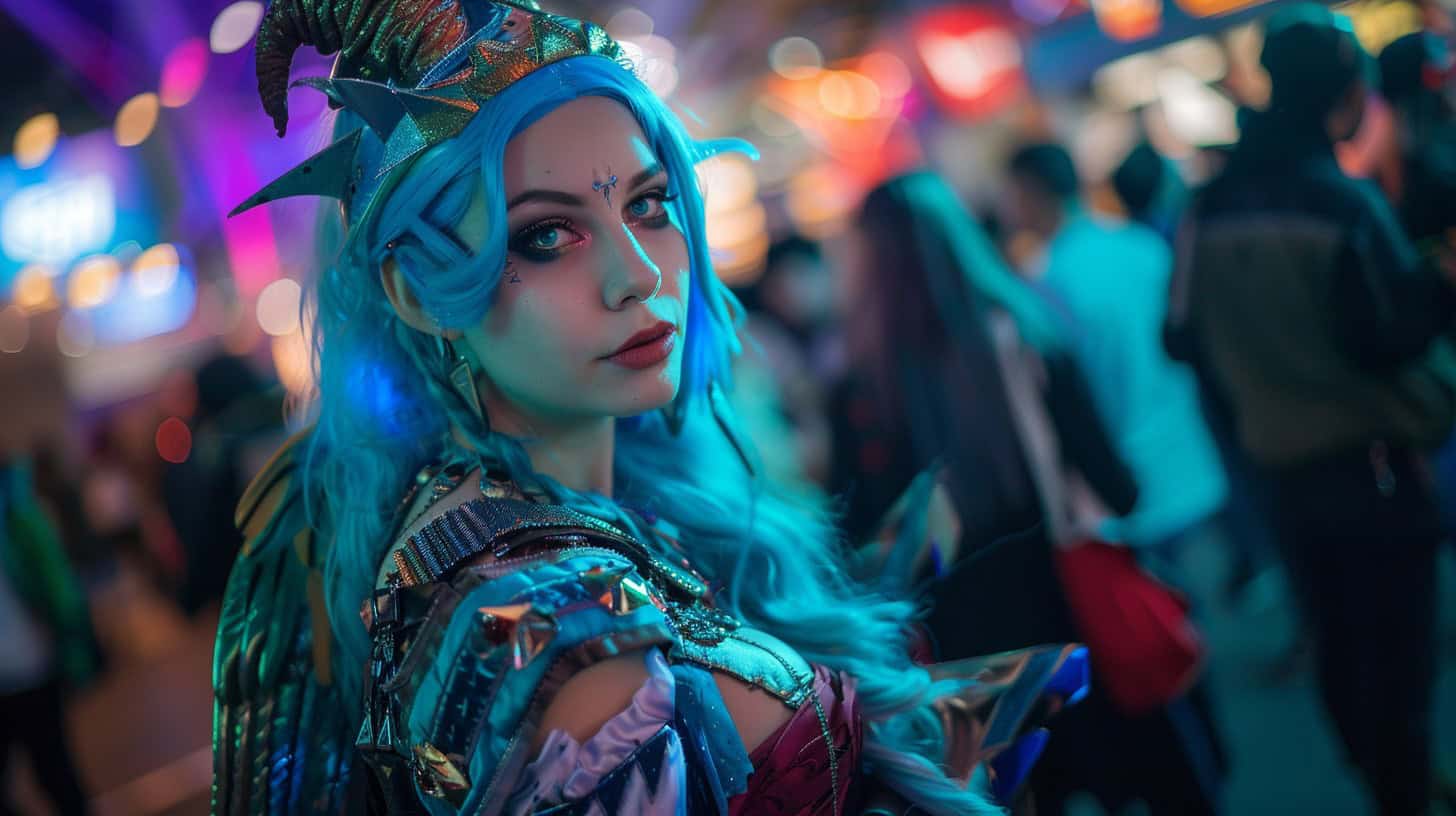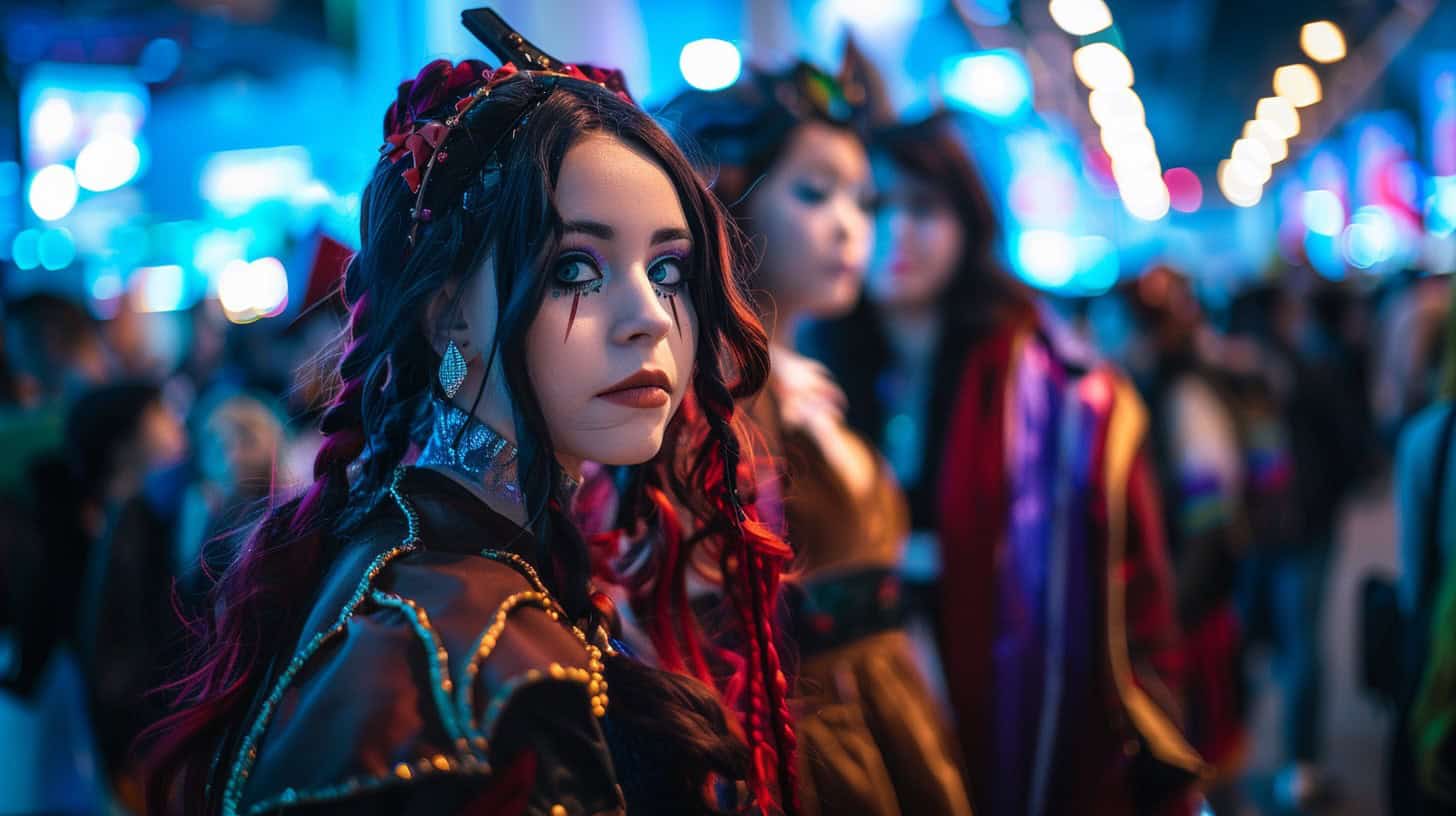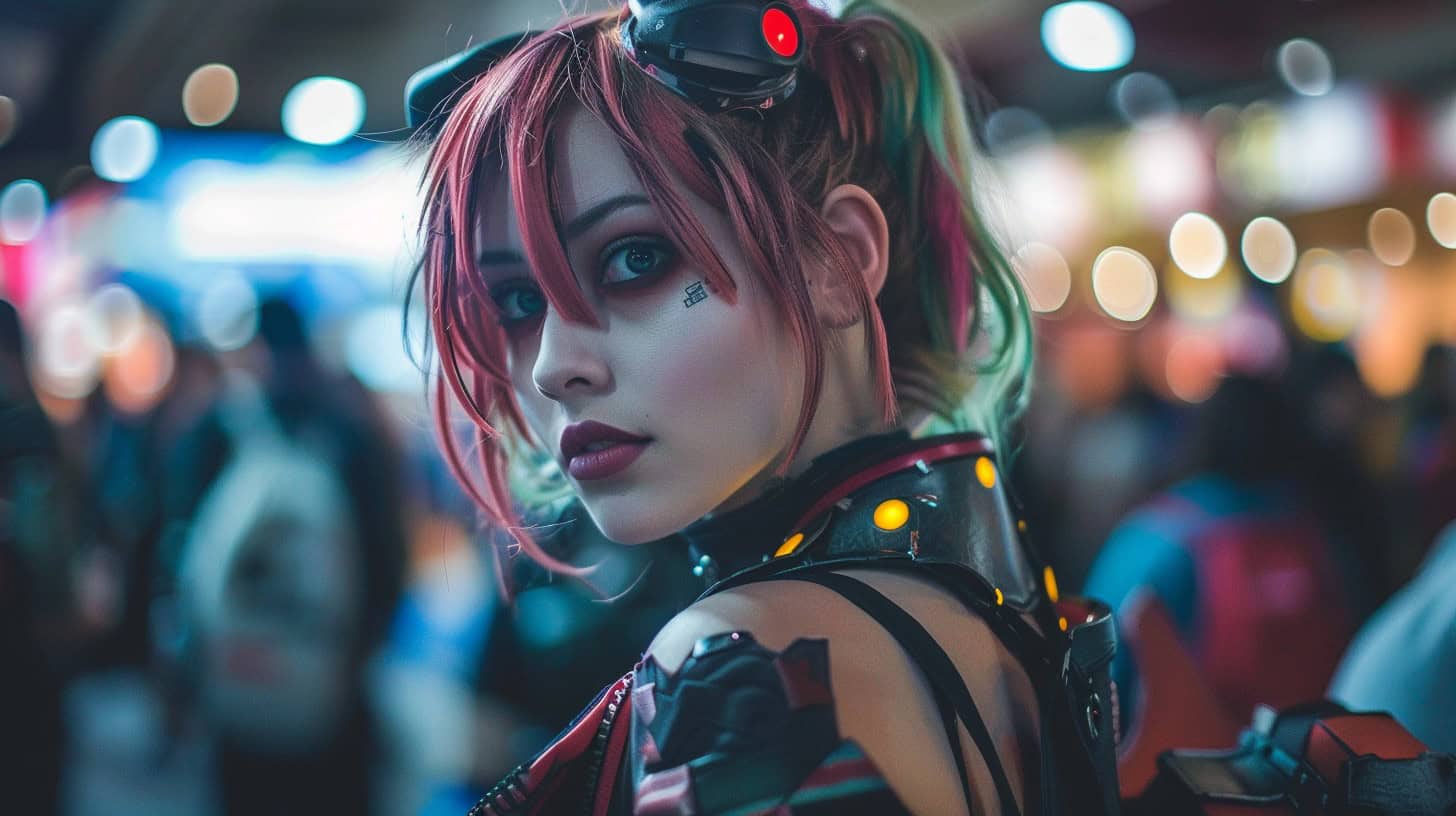Finding the perfect outfit for your character might seem tricky. Cosplay is dressing up as characters from movies, games, or comics. This article unveils cosplay’s origins and its wide-reaching impact today.
Let’s jump in!
Key Takeaways
Cosplay mixes costume and play, starting in Japan and spreading worldwide. It lets fans dress up as favorite characters from movies, games, or comics.
Fans share their cosplay at events like Comic-Con or on social media. They spend time making costumes to show off their love for these characters.
The word “cosplay” is both a thing you do and a way to describe yourself. It started being used this way around 2002.
Cosplay’s popularity has grown a lot since the early 2000s. Now, big events happen all over, like Katsucon and World Cosplay Summit.
This hobby changes fashion and media too. Designers use cosplay ideas in clothes now. Social media helps make some cosplayers very famous.
Table of Contents
Exploring the Concept of Cosplay

Cosplay mixes fun and art, letting people dress as their favorite characters. According to cosplay expert Candy Keane of Geek Mamas, it’s about showing love for these roles and sharing creativity with others.
The Origins and Meanings
The term “cosplay” comes from Japan, mixing the English words for costume and play. People first used “cosplay” as a word in 1993. It was inspired by “kosupure,” short for “kosuch?mu-pur?” in Japanese.
This mix shows how deep cosplay roots run in blending fashion with pretending to be characters from movies, comics, or video games.
Cosplay, a portmanteau of “costume play“, is an activity and performance art in which participants called cosplayers wear costumes and fashion accessories to represent a specific character.
https://en.wikipedia.org/wiki/Cosplay
Fans dress up as Catwoman, Batgirl, Nezuko, and other favorites at events like San Diego Comic-Con or online through social media apps like Instagram. They share creative ideas and show off their costumes, turning cosplay into more than just wearing outfits; it’s about bringing fictional worlds to life.
Whether they’re sewing their own Sailor Moon uniform or buying pieces to look like Goku, cosplayers invest time and passion into embodying their favorite characters accurately.
Defining Cosplay as Both Noun and Verb
Moving on from its origins, cosplay serves two roles: as an activity and identity. People use the word “cosplay” to talk about both the act of dressing up as a character and being someone who participates in this art.
In 2002, folks first saw “cosplay” used to describe acting out characters from movies, anime, comics, or video games. That year marked its debut as a verb in our talks. So when you hear someone say they will cosplay Spider-Man or that they enjoy cosplaying at comic conventions like SDCC or AnimeExpo, it means they plan to dress and act like Spider-Man for these events.
Cosplayers take their craft seriously, often spending hours creating elaborate outfits to become superheroes like Wonder Woman or villains from Dragon Ball. This dedication shows how important cosplaying is not just as a hobby, but also as a way to express fandom love deeply.
Whether part of groups at masquerade balls or competing alone in contests judges critique strictly—like those seen at Comiket—the goal remains the same: bring favorite characters to life with precision and passion.
Examining the Cultural Influence of Cosplay

Cosplay changes fashion and media. It mixes pop culture, creativity, and community in exciting ways.
The Rise in Popularity
Katsucon draws thousands every year, showing cosplay’s big leap. In 2000 and 2010, “cosplay” barely made a blip in English words–just 0.0044 times per million! Now, events like the World Cosplay Summit and major conventions in places like New York City are norms.
This sudden jump proves its firm hold in geek culture.
People from all walks of life come together at these gatherings. They wear outfits from favorite anime series, comic books, or Japanese animated shows like Naruto Uzumaki’s adventures or step into the shoes of sci-fi icons like Master Chief.
Online communities buzz with tips on perfecting these looks. It’s clear–the love for dressing up as cherished characters isn’t slowing down; it’s just getting started.
Effects on Fashion and Media
As cosplay’s popularity soars, its impact on fashion and media becomes unmistakable. Designers now draw inspiration from the bold, creative costumes seen at anime conventions and sci-fi gatherings.
This infusion of cosplay aesthetics into everyday fashion has led to a surge in clothing lines featuring elements typical to Japanese animation and fantasy genres. It’s common to spot outfits with vibrant prints and elaborate accessories that trace back to fan costuming traditions.
In terms of media, cosplays have taken over social platforms, pushing characters from niche comic books or animated series into the mainstream spotlight. Influencers who dress as these characters often gain massive followings, transforming previously underground fandoms into key components of popular culture.
Events like New York Comic Con (NYCC) and Anime Expo highlight this trend by showcasing cosplayed individuals on their official channels, further cementing cosplay’s role in shaping current trends in entertainment and style.
People Also Ask
What is cosplay?
Cosplay means dressing up as a character from movies, books, video games, or Japanese animated series. People wear costumes and accessories to become their favorite characters. It’s more than just costume play; it’s a way for fans to express themselves.
Where did cosplay start?
The origins of cosplay trace back to science fiction conventions in the United States during the early 20th century. However, it gained massive popularity in Japan thanks to fans of manga and anime. Now, it’s a global phenomenon at events like comics conventions and Star Wars celebrations.
Can anyone do cosplay?
Yes! Cosplay welcomes all genders and ages. Whether you’re crafting an elaborate Luffy outfit or embodying a woman superhero, there’s room for everyone. The key is respect—always ask for consent before taking pictures with cosplayers.
How does cosplay impact fashion?
Cosplay influences the fashion industry by bringing elements from fantasy into everyday wear—like school uniforms inspired by shojo manga or steampunk accessories seen at sci-fi conventions.
Are there competitions for cosplayers?
Absolutely! Costume contests are a big part of many events, where individuals or groups showcase their workmanship on stage—at times judged by famous figures like Jessica Nigri or Kamui Cosplay models.
What should I remember about cultural sensitivity in cosplay?
While embracing characters from diverse backgrounds, be mindful not to engage in cultural appropriation or perpetuate stereotypes—respect is crucial in the community.


